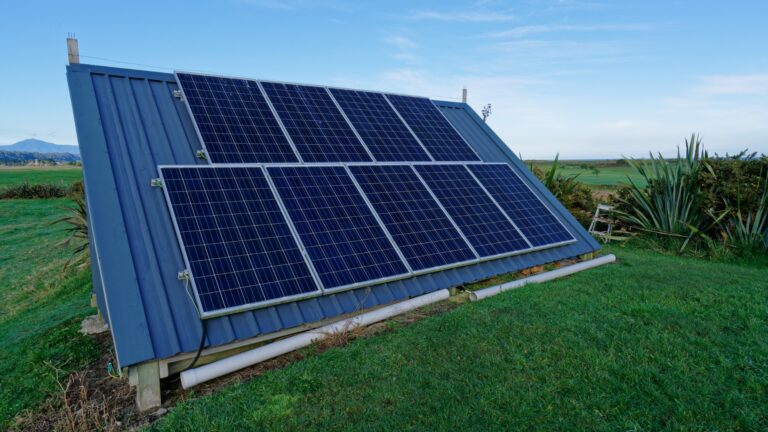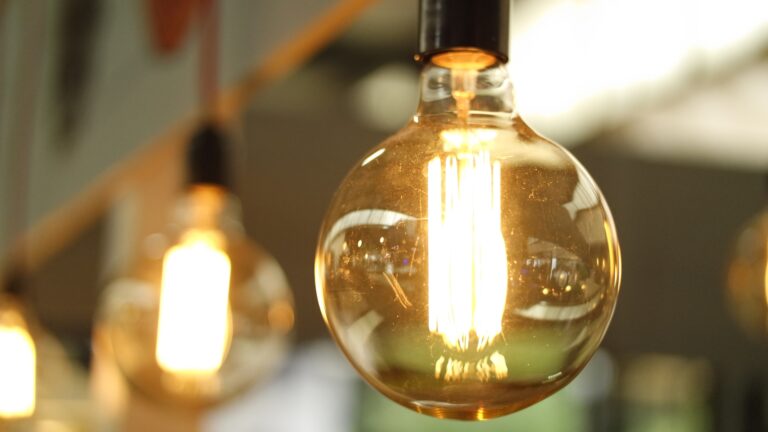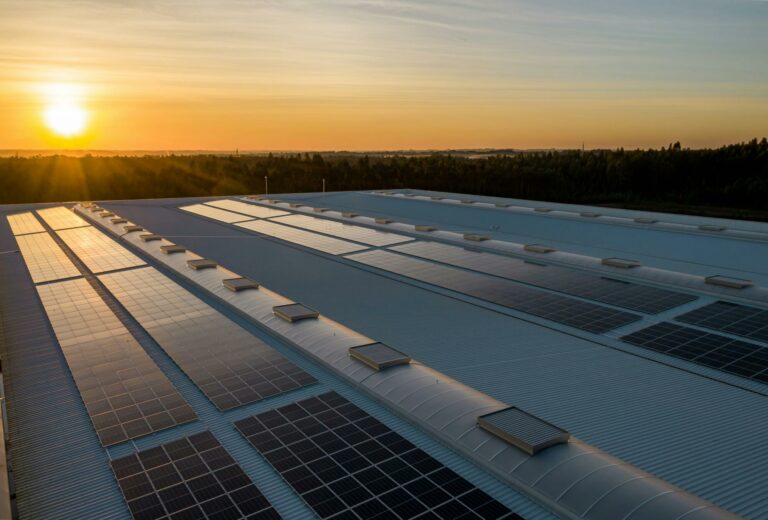Table of Contents
According to NASA, the sun produces 44 quadrillion watts of freely available power annually. This equals the output of 44 million large, pollution-producing power plants.
Solar energy is abundant, reliable, and environmentally friendly. This makes it the ultimate choice for commercial customers across the USA.
It’s an excellent source of reliable power during outages and infinitely renewable, but how do you take advantage of it for your business?
Keep reading to learn more about passive vs. active solar energy and how your business could benefit from these initiatives.
Types of Solar Energy
Solar energy is currently the fastest-growing power market worldwide. As such, it’s become more accessible and affordable than ever, with solar panel prices decreasing by 40% in the last ten years.
There are two ways your business can harness the power of solar energy by converting the sun’s rays into useful energy:
Active Solar Energy
Active solar energy devices capture solar radiation using photovoltaic cells as part of a solar panel setup. PV solar panels use semiconductor materials arranged within the panel to create a direct electric current.
When photons of sunlight strike these panels, the semiconductors release a stream of electrons. This creates an electric current that flows through the wiring in the PV panels to an inverter.
The inverter converts this direct current into an alternating current. Most commercial equipment runs on alternating current.
PV solar energy panels are usually roof-mounted at an angle that allows them to collect solar energy most efficiently. You can store excess energy in battery systems to make up for cloudy days or inclement weather.
Silicon-based monocrystalline, PERC, and polycrystalline solar panels are the best-known active solar energy examples.
You can also use thin-film solar panels to power your business. These PV panels use cadmium telluride, amorphous silicon, or copper indium gallium selenide to create an electric current.
Solar collectors work well in active solar systems. These devices use water or air to store energy in the form of heat.
You can distribute this heat throughout your premises via pumps, fans, air ducts, or blowers.
Passive Solar Energy
Passive solar energy options rely on the construction and structure of your building to function optimally. They’re usually used to convert the sun’s energy for heating and cooling.
You don’t need to install extra devices to take advantage of passive solar energy. They operate using the laws of thermodynamics.
Passive systems use collectors to draw energy from hot surfaces to the cooler surfaces of the collectors.
South-facing windows are one of the best ways to make use of the sun’s warming rays. You can make the most of them by installing double-pane or triple-pane highly insulative glass.
The following measures work well to complement your energy-efficient windows:
- Thick, insulated walls
- Vegetation to create shade
- Dark surfaces to optimize heat absorption
- Ceilings with external ventilation
- Cool roofs
You can use both active and passive solar energy in your business to cut costs and ensure a reliable source of energy.
The Pros and Cons of Passive vs. Active Solar Energy
Both active and passive solar systems are eco-friendly, sustainable energy sources. They help reduce carbon emissions and provide cost-effective energy for your commercial premises.
Each of them offers a few extra benefits, as follows:
Active Solar Energy Benefits
Active solar offers greater efficiency than passive solar does thanks to its mechanical elements. It usually has a higher capacity than passive solar does, too.
Unlike passive solar energy, your building’s design has little impact on how active solar operates. Solar energy companies can come up with solutions and retrofit them for almost any type of building.
You can connect your active solar system to the electrical grid to benefit from net metering and extra power when needed. You have more control over the electricity produced by an active solar power system.
Drawbacks of Active Solar Systems
Solar panels are a low-maintenance investment, but they do require a little ongoing maintenance. You must check your solar panels for damage regularly and arrange for a professional to clean them at least once a year.
Active solar technology is much more expensive than passive solar measures. The necessary equipment also takes up space inside and outside your building.
When you install an active solar system, you may need to acquire a permit from your local government. This process can be confusing, expensive, and take a long time.
You can enjoy federal rebates when you implement these systems. This helps reduce the expenses associated with active solar technology.
Why Use Passive Solar Power?
Passive solar power is an excellent way to reduce your building’s operational costs even further. By taking care of some heating and cooling tasks via passive means, you can use active solar-generated electricity for other things.
It’s an excellent option for smaller buildings with low heating and cooling needs. You typically don’t need any expensive technology to harness the power of passive solar energy.
Passive solar measures require no maintenance.
You can enjoy federal rebates by improving your building’s envelope with passive solar measures.
Negatives Associated with Passive Solar Energy
Unless your building is perfectly positioned, you might need to implement some expensive alterations to maximize passive solar energy. Passive solar relies heavily on the design, type, and placement of your windows, walls, and floors to perform at its best.
You have little control over the heat generated by solar energy. So, you could face overheating on very hot days or ineffective heating on very cold ones.
It’s sometimes difficult for installers to retrofit efficient passive solar measures for existing buildings.
Practical Applications of Passive vs Active Solar Energy in Business
Practical Applications in Various Business Scenarios
When considering the integration of solar energy into your business operations, understanding the practical applications of passive vs active solar energy is crucial. These two forms of solar power can be utilized in various business scenarios, offering unique advantages depending on your specific needs.
1. Active Solar Energy for High Energy Demand Businesses: Businesses with high energy demands, such as manufacturing plants or large office buildings, can significantly benefit from active solar energy systems. These systems can provide substantial electricity to power heavy machinery or extensive electronic equipment, making them a reliable source for businesses with intensive energy needs.
2. Passive Solar Energy for Cost-Effective Building Design: Smaller businesses or those focused on sustainability can leverage passive solar energy for efficient building design. By strategically placing windows and using specific construction materials, businesses can naturally regulate temperature, reducing reliance on heating and cooling systems.
3. Hybrid Systems for Versatile Energy Solutions: A combination of passive and active solar energy can offer a versatile solution, especially for businesses looking to balance energy efficiency with high-performance demands. This approach allows for the optimization of solar energy use, catering to both the operational and environmental goals of the business.
Incorporating passive vs active solar energy into different business scenarios not only enhances energy efficiency but also aligns with environmental responsibility, a growing concern in the modern business landscape.
10 FAQs on Passive vs Active Solar Energy
Additional Section: Practical Applications of Passive vs Active Solar Energy in Business
Practical Applications in Various Business Scenarios
When considering the integration of solar energy into your business operations, understanding the practical applications of passive vs active solar energy is crucial. These two forms of solar power can be utilized in various business scenarios, offering unique advantages depending on your specific needs.
1. Active Solar Energy for High Energy Demand Businesses: Businesses with high energy demands, such as manufacturing plants or large office buildings, can significantly benefit from active solar energy systems. These systems can provide substantial electricity to power heavy machinery or extensive electronic equipment, making them a reliable source for businesses with intensive energy needs.
2. Passive Solar Energy for Cost-Effective Building Design: Smaller businesses or those focused on sustainability can leverage passive solar energy for efficient building design. By strategically placing windows and using specific construction materials, businesses can naturally regulate temperature, reducing reliance on heating and cooling systems.
3. Hybrid Systems for Versatile Energy Solutions: A combination of passive and active solar energy can offer a versatile solution, especially for businesses looking to balance energy efficiency with high-performance demands. This approach allows for the optimization of solar energy use, catering to both the operational and environmental goals of the business.
Incorporating passive vs active solar energy into different business scenarios not only enhances energy efficiency but also aligns with environmental responsibility, a growing concern in the modern business landscape.
10 FAQs on Passive vs Active Solar Energy
What is the main difference between passive and active solar energy?
Passive solar energy utilizes the building design to harness solar power, while active solar energy involves mechanical devices like solar panels to convert sunlight into electricity.
Which is more cost-effective for small businesses, passive or active solar energy?
Small businesses often find passive solar energy more cost-effective due to lower installation and maintenance costs.
Can active solar energy systems store power for later use?
Yes, active solar energy systems can store excess energy in battery systems for use during cloudy days or at night.
Is passive solar energy sufficient for large commercial buildings?
While passive solar energy can contribute to energy efficiency, large commercial buildings might require active solar systems to meet their higher energy demands.
How do active solar energy systems connect to the electrical grid?
Active solar systems connect to the grid through an inverter, which converts the solar-generated direct current into an alternating current suitable for commercial use.
What are the maintenance requirements for active solar energy systems?
Active solar energy systems require minimal maintenance, mainly periodic cleaning and occasional checks for any damage or wear.
Can passive solar energy be integrated into existing buildings?
Yes, but retrofitting existing buildings for optimal passive solar energy use may require significant modifications.
What are the environmental benefits of using passive vs active solar energy?
Both systems reduce reliance on fossil fuels, decrease carbon footprint, and contribute to sustainable business practices.
What should businesses consider when choosing between passive and active solar energy?
Businesses should consider their energy needs, building design, location, and budget when deciding between passive and active solar energy.
Are there government incentives for adopting passive vs active solar energy systems?
Yes, there are various federal rebates and incentives available for businesses implementing solar energy solutions.
Discover the Best Solar Solutions for Your Business
When comparing passive vs. active solar energy, you must consider your needs in line with the possibilities for your building. A combination of both is often the best way to benefit from these innovations.
At Huston Solar, we’re committed to discovering the ideal energy solutions for our customers. With over 80 years of experience, we can help you save money and increase your productivity using solar power.
Get in touch today to discuss your commercial solar power needs.



